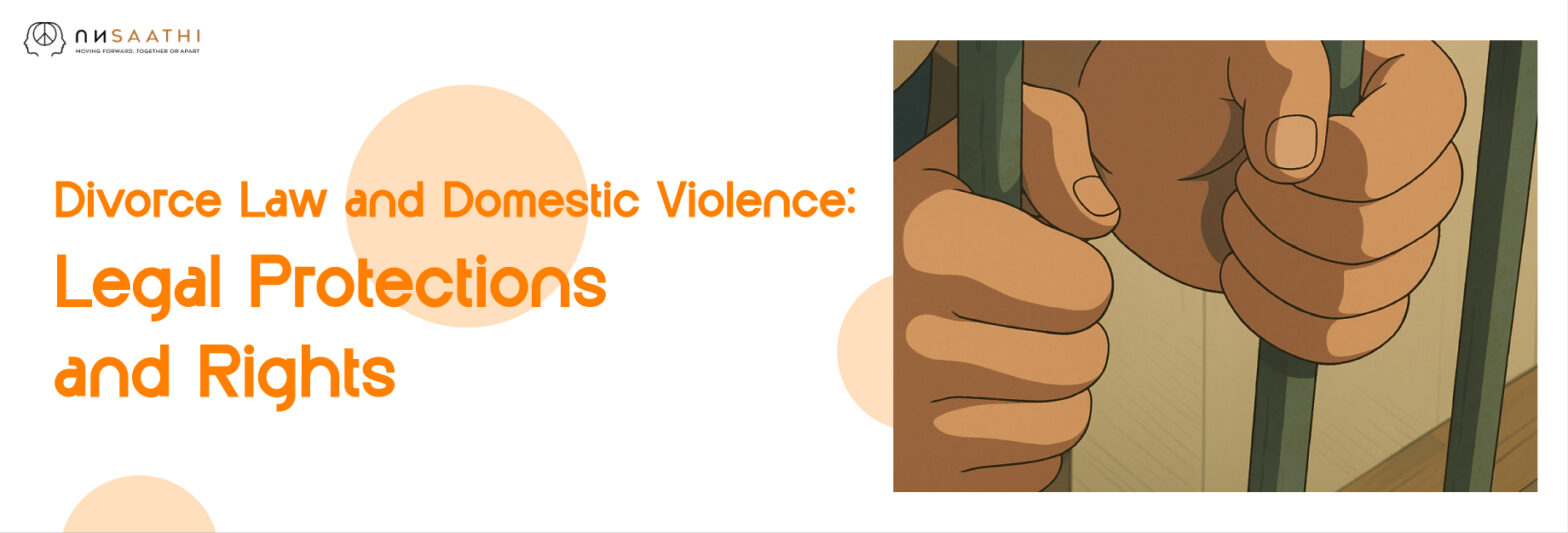Marriage, one of the cornerstones of traditional Indian society, has historically been conceived as a holy union. But in a time where social norms are shifting, and people want diverging things, many couples find themselves arriving at a crossroads trying to find a graceful way to dissolve their union.
When a legal procedure is a bit complicated and involves emotions, it makes it very hard, and soon the couple wants to divorce, but mutual consent divorce in India helps to provide the most amicable route to dissolution. This clause not only reflects the changing attitudes around marriage today but also allows couples to more dignifiedly separate from each other without the protracted combat of a contested divorce.
We will discuss the law regarding divorce by mutual consent in India in this article We examine the process in different religious and cultural contexts, explore the procedural specifics, look at the social implications, and consider how divorce by mutual consent is significant to contemporary India.
Divorce by Mutual Consent Explained
Divorce by mutual consent is a legal provision allowing both spouses to agree on dissolving the marriage. This route is for couples whose marital relationship is over but want to see their separation happen in an amicable way, without lengthy court battles or emotional toll. By filing a joint petition, the two parties wish to work out the conditions of their separation, which might involve property division, alimony and child custody.
Grounds: Divorce by Mutual Consent in Other Religions in India
The divorce by mutual consent laws differ concerning the religion of the parties in India, given the country’s diverse cultural and religious background. Here’s how mutual consent divorce works under various marriage laws:
Hindu Marriage Act, 1955
Again, Section 13B of the Hindu Marriage Act, 1955, governs the divorce from mutual consent. It enables a married couple to divorce if they have been married for at least one year. The husband and wife must file a joint petition in the court to dissolve their marriage. After the petition is filed, however, there is a six-month waiting period that must run. The waiting period gives the couple time to reconsider their decision, not to mention allowing for the possibility of reconciliation between the parties if that is what they want.
Muslim Law
Muslim law recognizes two forms of mutual divorce , namely, Khula and Mubarak. Khula refers to the situation where the wife initiates the divorce but agrees to provide something to the husband in return, often in the form of a financial settlement. Mubarat, on the other hand, however, is when the husband and wife both agree to divorce. Both forms of divorce require agreement from both parties involved, but there is a subtle difference in the condition in which they are granted, depending on the party initiating the divorce.
Special Marriage Act, 1954
For marriages registered under the Special Marriage Act of 1954, lifetime registrations tend to be inter-caste or inter-religious, and divorce by mutual consent is dealt with by Section 28. Under this provision, one of the spouses can petition for a divorce after living separately for a year. This law essentially gives a civil infrastructure to marriage and divorce so that even those from different religions have the same rights when officials go to break up a marriage.
Divorce by Mutual Consent: A Step-Wise Process
In contrast to a contested divorce, a divorce by mutual consent in India is generally an amicable process that enables a comparatively faster resolution. But it is still a detailed process involving legal, procedural, and emotional steps. Here’sHere’s how it plays out typically, so let’s discuss this procedure with the example of how it works as per the Hindu Marriage Act, 1955, even though the steps are practically same for other religious laws too.
Filing the Petition
This first step requires filing a divorce petition by mutual consent. The spouses need to be in sync about the divorce decision. The petition should contain details of the marriage itself, such as the grounds for divorce, any arrangements relating to child custody (if applicable), alimony, and division of property. The couple is also required to say they have been living apart for at least one year.
The Cooling-Off Period
There is typically a six-month Cooling-Off Period enforced by the court, which was between the filing of the petition. The waiting period is to allow for reconciliation and to give the couple time to consider their decision. The court may also order mediation or counselling in an attempt to resolve any lingering disputes at this stage. If the couple stands firm in wanting to get a divorce, the process moves to the next phase.
The Cooling-Off Period can be waived in certain exceptional cases, which involve abuse, adultery, etc.
Reaffirmation of Consent
At the conclusion of the waiting period, both parties must re-verify their desire to get divorced. They need to appear in court and file affidavits affirming that their consent to divorce is genuine and voluntary. The court will also direct the couple to provide confirmation that they find terms of their agreement such as property division, child custodian and alimony fare and mutually agreeable.
Court Hearing
Upon reaffirmation, the court sets a hearing. The parties will attend the hearing in person to make sure they still want to proceed with the divorce. The couple will be interrogated separately by the court to make sure that it is a joint decision and that both sides are not under duress or duress. The court also checks that the euro divorce agreement is fair and that one side is not getting pounded or exploited.
Decree of Divorce
If both parties agree to the satisfaction of the court, the court grants the Decree of Divorce. If the decree is issued in court, it legally ends the marriage and makes official the terms you agreed on. The divorce is final, and both can go on with their lives. Any outstanding matters of a financial or legal nature should be concluded in accordance with the orders issued by the court.
Key Points to Keep in Mind
Divorce by mutual consent is generally the faster and less acrimonious route, but it also comes with some things you should really know:
Consistency of terms: It is important that each party agree on all the terms before the divorce petition is filed and it concerns the topics of property division, alimony and child custody (where applicable).Disputes over these issues can complicate the process.
If either one of the parties withdraws his or her consent during the waiting period or they both fail to show at the time of reaffirmation hearing, the divorce petition may be dismissed by the court.
True Consent: The court pays particular attention to if the divorce is being entered by both parties freely, and with any coercion or undue influence. The petition can be rejected if the court has doubts about the consent being genuine.
Societal Implication of Divorce by Mutual Consent
The introduction of divorce by mutual consent has several beneficial aspects both for the individual and the society. In a land like India, where divorce still carries a considerable stigma, the introduction of this option is a more humane and less confrontational solution to a decaying marriage. It also enables couples to separate without the emotional burden of a contested divorce.
In addition, the approach encourages respect for one’s autonomy, enabling each party to come to an informed decision about their married life. In some instances it also stops long-lasting bitterness or acrimony, allowing both to continue on with their lives in a healthier less confrontational way.
Despite this, divorce by mutual consent is seen as sensitive in many communities, particularly rural neighbourhoods and conservative areas. Due to social stigma and cultural beliefs about marriage and divorce, many people are reluctant to pursue divorce until it is absolutely necessary for both parties. To ease this challenge, the legal system is working itself through provisions such as mutual consent divorce to make divorce a less daunting task and more approachable.
Conclusion
That being said, divorce by mutual consent in India provides a systematic and simplified way for couples who want to end their marriage peacefully. It recognizes individual freedom while encouraging an equitable dissolution process. However, despite the societal challenges with divorce, there was a positive shift towards progressive law in India. It offers a balanced, compassionate alternative to contested divorces and empowers individuals to make decisions that serve their emotional health, financial security, and future happiness.
As such, divorce by mutual consent carries not just the potential for a more amicable end to a marriage under this legal umbrella but also indicates a further evolution in how society perceives marriage and separation as attitudes towards self-determination in the institution of marriage evolve.




